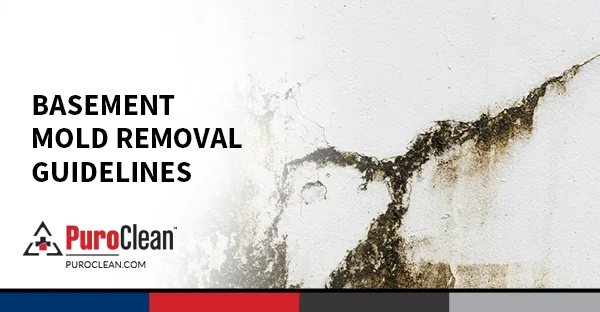Flood damage can wreak havoc on homes, causing structural damage, water infiltration, mold growth, and electrical hazards. When faced with the aftermath of a flood, immediate and effective restoration efforts are essential to mitigate the damage and restore the property to its pre-flood condition. In this guide, we’ll explore the importance of flood damage restoration and provide valuable insights into the restoration process to help homeowners navigate this challenging situation.
Understanding Flood Damage
Flood damage can take various forms, including structural damage, water damage, mold growth, and electrical hazards. Floodwaters can infiltrate homes through entry points such as doors, windows, and basements, causing extensive damage to properties and belongings.
Immediate Steps After a Flood
After a flood, taking immediate action is crucial to minimize damage and ensure the safety of occupants. Here are the immediate steps homeowners should take after experiencing a flood:
- Ensure Personal Safety: Safety should always be the top priority. Before entering a flooded area, assess the risks carefully. Avoid contact with floodwaters if possible, as they may contain contaminants or pose electrical hazards. Use protective gear like gloves, boots, and masks to prevent exposure to harmful substances.
- Document the Damage: As soon as water recedes, document the extent of the damage for insurance purposes by taking photographs and videos of the affected areas, including structural damage, water levels, and damage to belongings. This documentation will be essential when filing insurance claims and seeking compensation for flood-related losses.
- Flood Damage Restoration Professionals: Contact flood damage repair professionals to assess the damage and initiate restoration efforts. Professional technicians have the expertise and equipment necessary to restore properties to their pre-flood condition efficiently.
- Turn Off Utilities: If it’s safe, turn off utilities such as electricity, gas, and water to limit further damage and reduce the risk of electrical hazards or gas leaks. Avoid using electrical appliances or outlets in flooded areas until a qualified professional has inspected them.
- Remove Standing Water: If there’s standing water in the home, use a wet vacuum, pump, or bucket to remove it as quickly as possible. Standing water can cause further damage to structures, flooring, and belongings and create ideal conditions for mold growth.
- Ventilate the Area: Open windows and doors to promote airflow and ventilation in the affected areas. This will help reduce moisture levels and speed up drying, preventing mold growth and odors.
- Salvage Important Belongings: Salvage any important belongings or valuables that the floodwaters haven’t damaged. Move them to a safe, dry location to facilitate the restoration process.
- Dispose of Contaminated Items: Dispose of any contaminated items or materials that cannot be salvaged, such as food, cosmetics, and porous materials like carpeting and upholstered furniture. These items may pose health risks if exposed to floodwaters for an extended period.
- Avoid DIY Cleanup: While it may be tempting to start cleaning up immediately, avoid DIY cleanup efforts, especially if the damage is extensive. Improper cleanup techniques can exacerbate the damage and pose health risks. Leave the cleanup and restoration process to trained professionals with the expertise and equipment to handle the job safely and effectively.
- Follow Guidance from Authorities: Stay informed and follow guidance from local authorities and emergency services regarding evacuation orders, safety precautions, and updates on flood conditions. Be prepared to evacuate if necessary and follow evacuation routes and instructions provided by authorities.
The Flood Damage Restoration Process
The water damage restoration involves several steps, including assessing and inspecting the damage. Professional restoration technicians use specialized equipment to extract standing water, dry and dehumidify the impacted areas, clean and disinfect surfaces, and make structural repairs. Following a systematic approach, restoration professionals can efficiently restore properties to their pre-flood condition.
Importance of Professional Restoration Services
Hiring professional flood damage restoration services ensures thorough and effective restoration efforts. Professional technicians have the expertise, experience, and advanced equipment necessary to expedite restoration and minimize further damage to properties. By entrusting the restoration process to professionals, homeowners can have peace of mind knowing that their homes are in capable hands.
Preventive Measures to Minimize Flood Damage
While floods are unpredictable, homeowners can take measures to mitigate the risk of flood damage in the future. These include installing flood barriers, waterproofing basements, and cleaning gutters and downspouts to ensure proper drainage. Additionally, having a comprehensive flood insurance policy provides financial protection in the aftermath of a flood.
Flood damage can have devastating consequences for homeowners. Still, prompt and effective restoration efforts can help limit the damage and restore properties to their pre-flood condition. By understanding the importance of flood damage restoration and taking proper measures to mitigate the risk of future harm, homeowners can safeguard their homes against the destructive effects of floods. If faced with flood damage, don’t hesitate to contact Water Damage Restoration Services to help you navigate this challenging situation and restore your home to its former glory.




 PuroClean of Southlake
PuroClean of Southlake